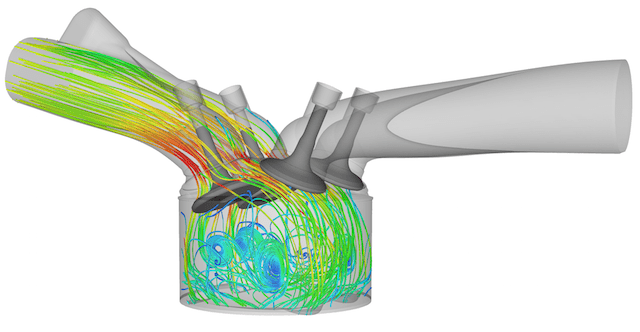The forthcoming Version 2.3 release of the US-based company’s Converge CFD combines the package’s automated meshing function with new facilities for solving surface chemistry and molten-solid reactions.
The automatic meshing function is one of the cornerstones of the software, explained Convergent Science marketing director Rob Kaczmarek.
“The creators of the software were trying to carry out combustion studies and they found that if you changed the mesh you could get a substantially different answer,” he said. “They looked at various different ways of tackling this problem and they came up with the idea of automating the meshing process with an orthogonal mesh that does not deform or stretch like traditional CFD meshes.”

Where Converge differs from most other CFD packages is that the meshing function is fully integrated and coupled into the flow and chemistry solver.
It creates a new mesh for every time step, which allows critical areas of the mesh to be refined dynamically during runtime (adaptive mesh refinement) – for instance focusing on the mesh around the flame front as it propagates out across the cylinder.
“Some packages have scripted mesh generation, but the second you change one of the parameters that scripting is altered and you get some inaccuracies as a result,” Kaczmarek said. “With our approach, it doesn’t matter how many times the geometry is changed or moved the mesh remains consistent, because it is created during the runtime and rejuvenated with each time step.”
The new surface chemistry solver means that the package can now model the reaction between a solid surface and a gas-phase species on both walls and porous media, while the molten-solid capability is aimed primarily at modelling the depletion of urea in diesel after treatment systems.
The strength of the new package is combining these chemistry models with its unique approach of fully coupling the mesh with the flow and chemistry solvers, automating its generation at runtime and then refining the mesh when and where it is needed.
PSA Peugeot Citroën has been using past iterations of the package for more than four years and the group’s manager for the modelling of energetic and combustion systems, Clément Dumand said this self-meshing capability has substantially improved productivity.
“Generating the mesh automatically allows us to do ten times more simulation cases than we could do previously. We needed something that efficient to evaluate the large number of configurations we want to try.”





Project to investigate hybrid approach to titanium manufacturing
What is this a hybrid of? Superplastic forming tends to be performed slowly as otherwise the behaviour is the hot creep that typifies hot...